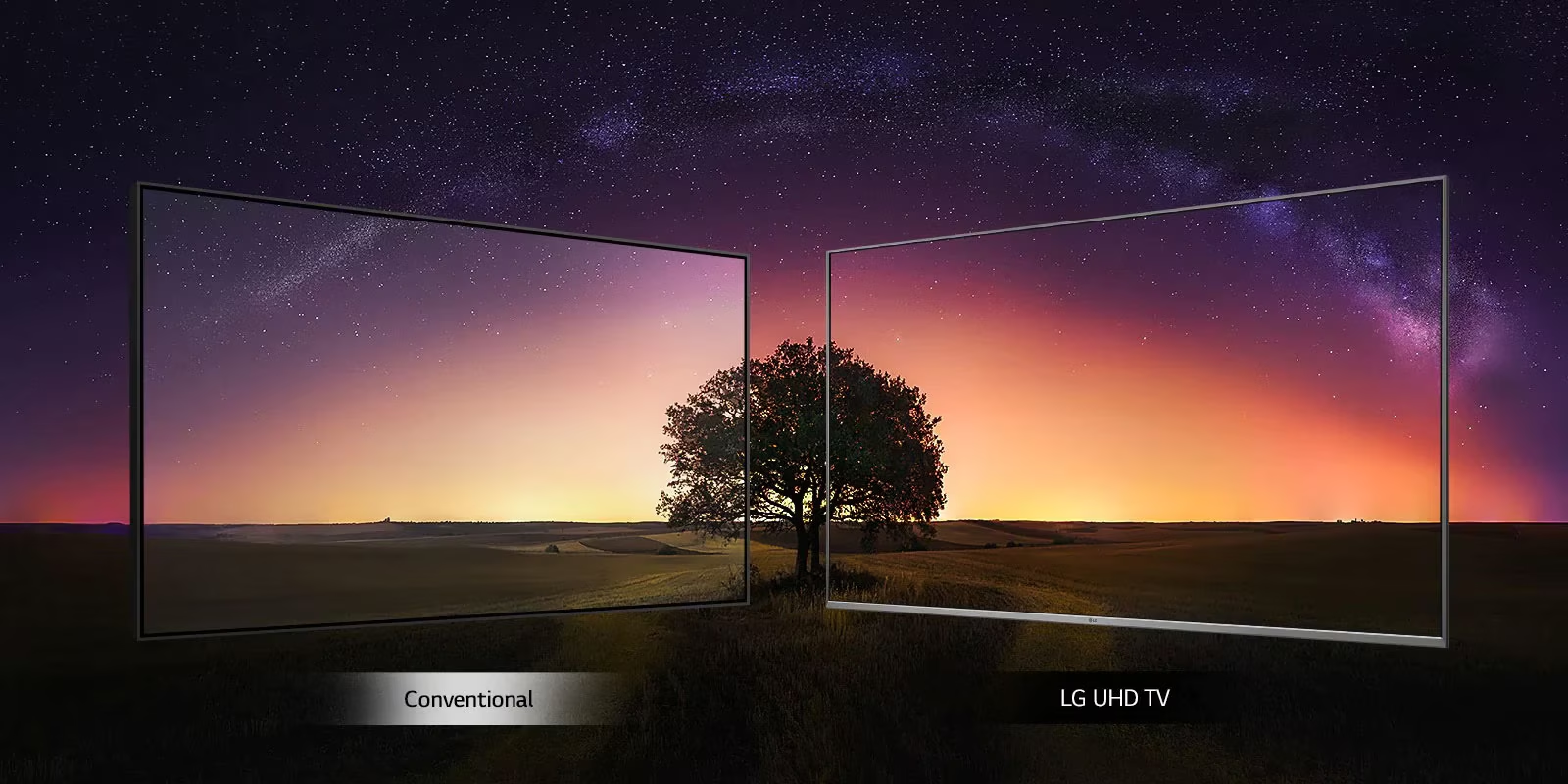When buying a new LED TV, one of the most important factors to consider is resolution. The resolution determines the sharpness, clarity, and detail of the images displayed on the screen. With so many options available, including HD, Full HD, and 4K, it can be confusing to understand the differences between them.
Each resolution type offers a different viewing experience, and choosing the right one depends on factors such as screen size, viewing distance, and budget. In this blog, we will compare HD, Full HD, and 4K resolutions to help you make the right choice for your entertainment needs.
Understanding TV Resolutions
Resolution refers to the number of pixels that make up the screen. Pixels are tiny dots that come together to create an image. The more pixels a screen has, the sharper and clearer the picture appears.
There are three common resolution categories:
- HD (720p): 1280 x 720 pixels
- Full HD (1080p): 1920 x 1080 pixels
- 4K (Ultra HD): 3840 x 2160 pixels
Higher resolutions provide better clarity, but they also require more processing power and bandwidth for streaming. Understanding these differences will help you choose the right TV based on your viewing habits and preferences.
What is HD (720p) Resolution?
HD, or 720p resolution, consists of 1280 x 720 pixels. This resolution was once the standard for televisions and remains a popular choice for budget-friendly models.
Advantages of HD:
- More affordable than higher-resolution TVs
- Uses less internet bandwidth for streaming
- Works well with older devices like DVD players
Limitations of HD:
- Lower image clarity compared to Full HD and 4K
- Not ideal for large screen sizes (above 32 inches)
- Less detail in fast-moving scenes, such as sports or action movies
Best for: Small TVs (32 inches or smaller) in bedrooms, kitchens, or guest rooms.
What is Full HD (1080p) Resolution?
Full HD, or 1080p resolution, contains 1920 x 1080 pixels, offering significantly improved picture quality over HD.
Advantages of Full HD:
- Sharper and clearer images compared to HD
- The standard resolution for most TV channels and streaming services
- A good balance between affordability and quality
Limitations of Full HD:
- Not as detailed as 4K resolution
- May not provide the best experience on very large screens
Best for: Mid-sized TVs (40-55 inches) for living rooms and home entertainment setups.
What is 4K (Ultra HD) Resolution?
4K, also known as Ultra HD, has 3840 x 2160 pixels, four times the number of pixels found in Full HD. This resolution offers exceptional clarity and is becoming the new standard for high-end televisions.
Advantages of 4K:
- Incredibly sharp and detailed images
- Better color accuracy and contrast, especially with HDR support
- Ideal for large-screen TVs
- Enhances the experience of gaming and streaming high-quality content
Limitations of 4K:
- More expensive than HD and Full HD TVs
- Requires high-speed internet for 4K streaming
- Some TV channels and services still do not support 4K content
Best for: Large-screen TVs (50 inches and above) for home theaters and premium entertainment.
HD vs. Full HD vs. 4K – Key Differences
Below is a quick comparison of the three resolutions:
| Feature | HD (720p) | Full HD (1080p) | 4K (Ultra HD) |
| Resolution | 1280×720 | 1920×1080 | 3840×2160 |
| Image Clarity | Basic | Sharp | Ultra Sharp |
| Best Screen Size | 32-inch or smaller | 40-55 inches | 50 inches and above |
| Price Range | Low | Moderate | High |
Which Resolution Should You Choose?
Selecting the right TV resolution depends on your needs, budget, and how you plan to use the TV.
- For budget buyers: If you need a basic TV for casual viewing, HD (720p) is a cost-effective option. It works well for small screens and secondary TVs in bedrooms or kitchens.
- For everyday entertainment: Full HD (1080p) provides a great balance between price and quality. It is ideal for regular TV shows, movies, and gaming on mid-sized screens.
- For the best experience: If you want the highest picture quality, 4K (Ultra HD) is the way to go. It’s perfect for large screens and provides an immersive viewing experience, especially when watching high-quality content.
Does Resolution Affect Streaming and Gaming?
Resolution plays a significant role in streaming and gaming performance.
- HD (720p): Works well with free TV channels and standard-definition streaming.
- Full HD (1080p): The most common resolution for YouTube, Netflix, and other streaming services.
- 4K (Ultra HD): Offers the best quality but requires a strong internet connection and a compatible streaming device.
For gaming, higher resolution means better visuals, but it also requires more powerful gaming consoles or PCs. Many modern gaming consoles, like PlayStation 5 and Xbox Series X, support 4K gaming, but older consoles work best with Full HD.
Conclusion
Understanding the difference between HD, Full HD, and 4K is essential when choosing an LED TV. While HD is great for budget-friendly setups, Full HD provides better clarity for a reasonable price. 4K, on the other hand, offers superior image quality and is best for larger screens and premium viewing experiences.
Before making a purchase, consider your viewing habits, room size, and budget. If you want a sharper and more immersive experience, investing in a 4K TV is a great choice. However, if you are looking for an affordable and practical option, Full HD or HD TVs can still provide a great viewing experience.Looking for the perfect TV for your home? Explore the latest LED TV models at Lahore Centre and find the one that best suits your needs!



